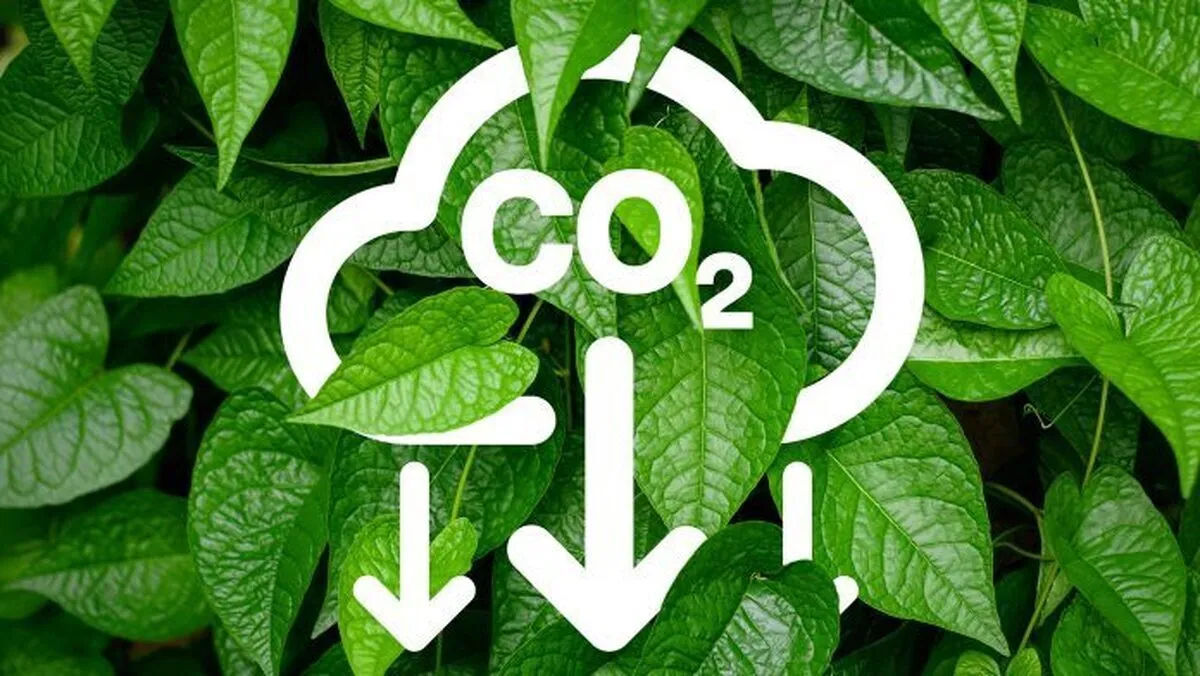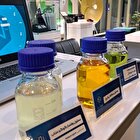New Material Removes CO₂ from Air Like Tree

The concept may sound futuristic: at ETH Zurich, researchers from multiple disciplines are collaborating to combine conventional materials with microorganisms like bacteria, algae, and fungi, the journal Nature Communications reported.
Their shared goal is to create living materials that gain useful properties through microbial metabolism—“such as the ability to bind CO₂ from the air by means of photosynthesis,” explains Mark Tibbitt, Professor of Macromolecular Engineering at ETH Zurich.
Now, an interdisciplinary team led by Tibbitt has brought this idea to life. They successfully embedded photosynthetic bacteria, known as cyanobacteria, into a printable gel, creating a material that is alive, capable of growing, and actively capturing carbon from the atmosphere. The team introduced their “photosynthetic living material” in a recent study.
The material can be shaped using 3D printing and needs only sunlight, carbon dioxide, and artificial seawater with common nutrients to grow. “As a building material, it could help to store CO₂ directly in buildings in the future,” says Tibbitt, who co-initiated the living materials research at ETH Zurich.
The special thing about it: the living material absorbs much more CO2 than it binds through organic growth. “This is because the material can store carbon not only in biomass, but also in the form of minerals – a special property of these cyanobacteria,” reveals Tibbitt.
Yifan Cui, one of the two lead authors of the study, explains: “Cyanobacteria are among the oldest life forms in the world. They are highly efficient at photosynthesis and can utilise even the weakest light to produce biomass from CO2 and water.”
At the same time, the bacteria alter their surrounding chemical environment through photosynthesis, causing solid carbonates such as lime to form. These minerals serve as an additional carbon sink and, unlike biomass, store CO₂ in a more stable and long-lasting form.
“We utilise this ability specifically in our material,” says Cui, who is a doctoral student in Tibbitt’s research group. A practical side effect: the minerals are deposited inside the material and reinforce it mechanically. In this way, the cyanobacteria slowly harden the initially soft structures.
Laboratory tests showed that the material continuously binds CO₂ over a period of 400 days, most of it in mineral form – around 26 milligrams of CO2 per gram of material. This is significantly more than many biological approaches and comparable to the chemical mineralization of recycled concrete (around 7 mg CO2 per gram).
The material that holds the living cells is a hydrogel—a water-rich gel made from cross-linked polymers. Tibbitt’s team designed the polymer network to allow light, carbon dioxide, water, and nutrients to pass through while enabling the cells to distribute evenly throughout the material.
To help the cyanobacteria survive longer and stay effective, the researchers optimized the geometry of the printed structures using 3D printing techniques. These adjustments increased the surface area, improved light exposure, and enhanced nutrient flow.
Co-first author Dalia Dranseike: “In this way, we created structures that enable light penetration and passively distribute nutrient fluid throughout the body by capillary forces.” Thanks to this design, the encapsulated cyanobacteria lived productively for more than a year, the materials researcher in Tibbitt’s team is pleased to report.
The researchers see their living material as a low-energy and environmentally friendly approach that can bind CO2 from the atmosphere and supplement existing chemical processes for carbon sequestration. “In the future, we want to investigate how the material can be used as a coating for building façades to bind CO2 throughout the entire life cycle of a building,” Tibbitt looks ahead.
There is still a long way to go, but colleagues from the field of architecture have already taken up the concept and realized initial interpretations in an experimental way.
Thanks to ETH doctoral student Andrea Shin Ling, basic research from the ETH laboratories has made it onto the big stage at the Architecture Biennale in Venice. “It was particularly challenging to scale up the production process from laboratory format to room dimensions,” says the architect and bio-designer, who is also involved in this study.
Ling is doing her doctorate at ETH Professor Benjamin Dillenburger’s Chair of Digital Building Technologies. In her dissertation, she developed a platform for biofabrication that can print living structures containing functional cyanobacteria on an architectural scale.
For the Picoplanktonics installation in the Canada Pavilion, the project team used the printed structures as living building blocks to construct two tree-trunk-like objects, the largest around three meters high. Thanks to the cyanobacteria, these can each bind up to 18 kg of CO2 per year – about as much as a 20-year-old pine tree in the temperate zone.
“The installation is an experiment – we have adapted the Canada Pavilion so that it provides enough light, humidity and warmth for the cyanobacteria to thrive and then we watch how they behave,” says Ling. This is a commitment: The team monitors and maintains the installation on site – daily. Until 23 November.
At the 24th Triennale di Milano, Dafne’s Skin is investigating the potential of living materials for future building envelopes. On a structure covered with wooden shingles, microorganisms form a deep green patina that alters the wood over time: a sign of decay becomes an active design element that binds CO2 and enhances the aesthetics of microbial processes. Dafne’s Skin is a collaboration between MAEID Studio and Dalia Dranseike. It is part of the exhibition “We the Bacteria: Notes Toward Biotic Architecture”.
4155/v





















